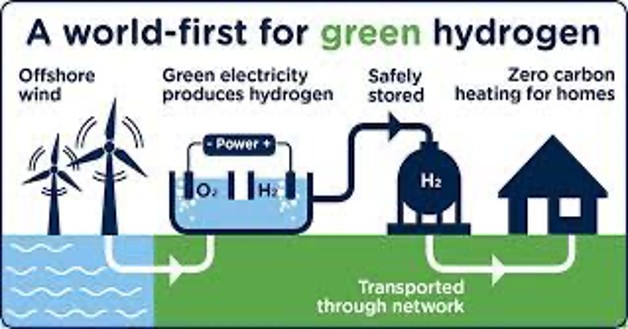According to the World Economic Forum, hydrogen could be one of the key drivers in the world’s transition to clean energy. Hydrogen, the simplest known element in the universe, may very well be an essential source of clean energy in the years ahead. Writing for Greenly journalist Sergiy Slipchenko said “The fact that water is the only byproduct of using hydrogen as a fuel makes it a clean and ecologically friendly source of energy.” But hydrogen isn’t necessarily ‘green’ – in fact, most hydrogen is produced from fossil fuels, in particular, natural gas – and hydrogen still needs the support of both the public and private sectors to realize its potential as a clean energy source.
Green hydrogen currently accounts for less than one percent of total annual hydrogen production. One of the more common types of hydrogen produced right now – blue hydrogen – is sourced from natural gas. This is achieved through a process called steam methane reforming (SMR). SMR blends natural gas with hot steam, producing both hydrogen and carbon monoxide. Hydrogen from gasification costs between $1.31/kg and $2.06kg. Meanwhile, green hydrogen is made from renewables and relies on a process called electrolysis – the process of using electricity to split water into hydrogen and oxygen, which is a lot healthier for the environment than blue hydron’s carbon monoxide split. Still, most carbon monoxide produced from blue hydron is captured and stored rather than released into the environment like grey hydrogen’s split.
The issue is that similar to carbon capture and sequestration, green hydrogen is not yet at a place where it is commercially viable. Emanuele Taibi, Head of Power Sector Transformation Strategies at the International Renewable Energy Agency, noted that “renewable energy technologies [have] reached a level of maturity… today that allows competitive renewable electricity generation all around the world, [which is] a prerequisite for competitive green hydrogen production. Electrolyzers, though, are still deployed at [a] very small scale, needing a scale-up of three orders of magnitude in the next three decades to reduce their cost threefold.”
Costs for wind and solar power have dropped precipitously over the past several years. Similarly, the cost to produce green hydrogen is expected to lower over time. Today, green hydrogen produced through electrolysis using renewable power costs approximately $10-15 USD per kg, depending on availability. The cost of alkaline electrolyzers manufactured in North America and Europe fell 40% between 2014 and 2019. Due to the falling costs of electrolyzers, BloombergNEF’s calculations suggest that renewable hydrogen could be produced for $0.7 to $1.6/kg in most parts of the world before 2050.
The public sector is certainly on the right path to catalyzing the growth of green hydrogen. On June 7th, 2022, President Biden pledged to support hydrogen projects via an 8 billion dollar investment. The Biden administration’s support for the energy source is indicative of hydrogen’s growing momentum as a clean energy source. The Department of Energy is providing 6 to 7 billion dollars of funding for 6 to 10 hydrogen hubs across the country. But it’s not only in the U.S where green hydrogen is finding public support. As part of its trillion-dollar Green Deal package, Europe is aiming for 50% of all hydrogen production to derive from renewable energy. Currently, a massive 96% of the continent’s hydrogen production comes from fossil fuels.
Green hydrogen needs continued support from governments if it is going to become a viable alternative to fossil fuels. In 2018, 99% of hydrogen was made with fossil fuels. One of the reasons for this is that hydrogen is harder to store than natural gas. Therefore, up to 4 times more storage infrastructure needs to be built for $637 billion by 2050 to provide the same amount of energy as provided by fossil fuels.
If the energy sectors can make hydrogen production more economical, clean hydrogen could meet up to 50% of the world’s energy needs by 2050. The future is looking promising for hydrogen as a viable energy source and, most importantly, one that can help transition our global economy off of fossil fuels.
Author bio-
Ted Shabecoffis founder and CEO of greenly.co





